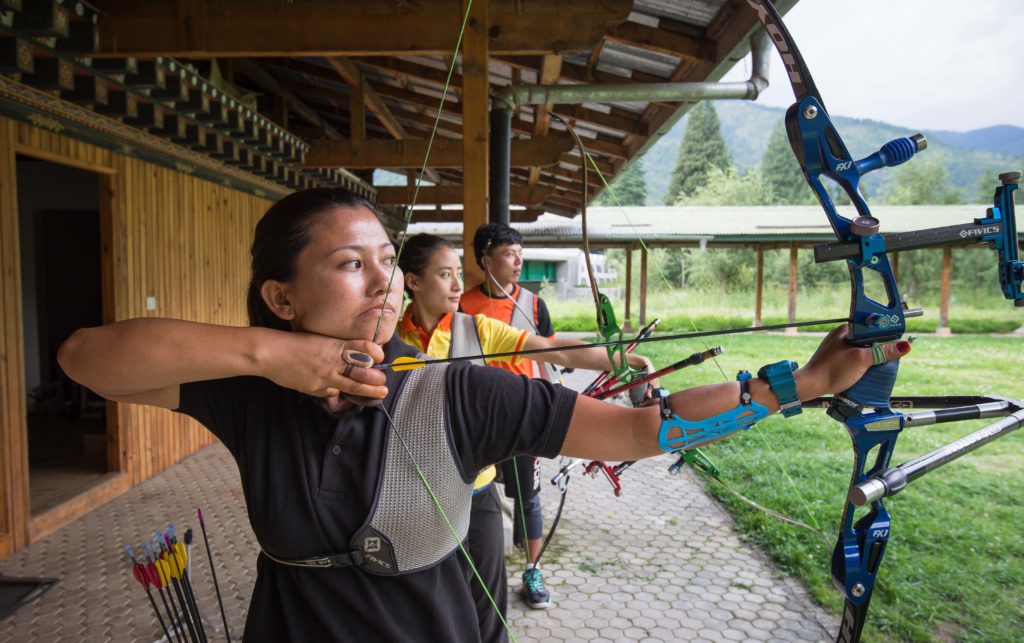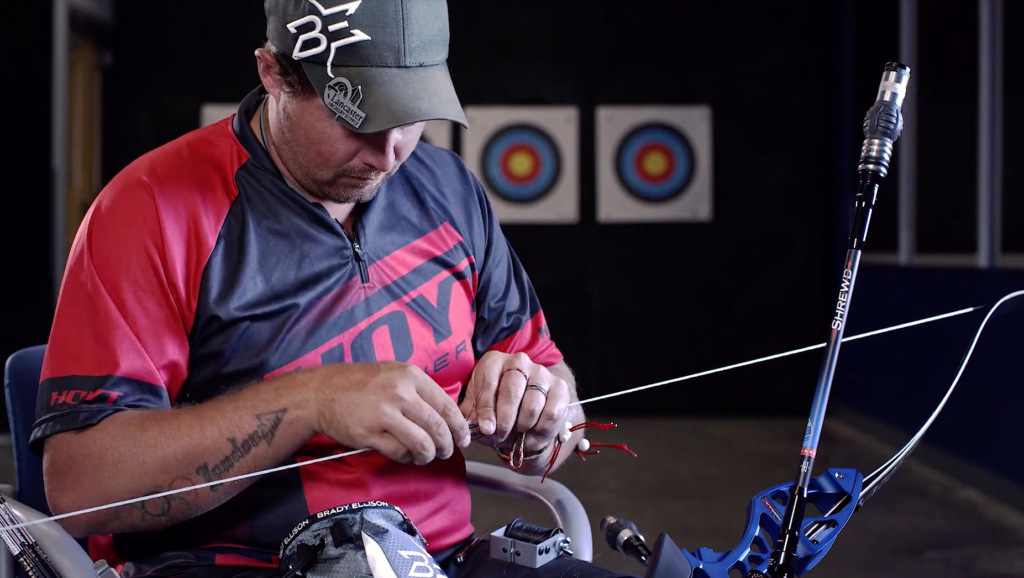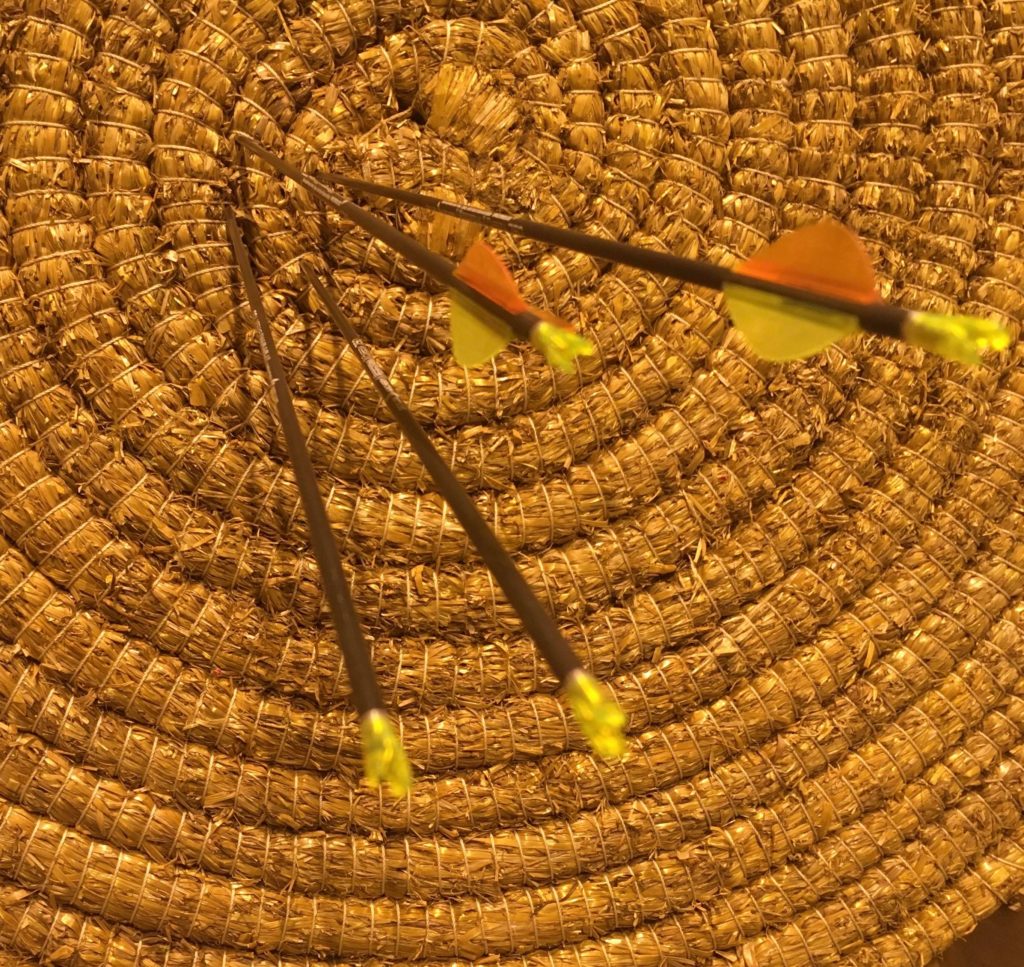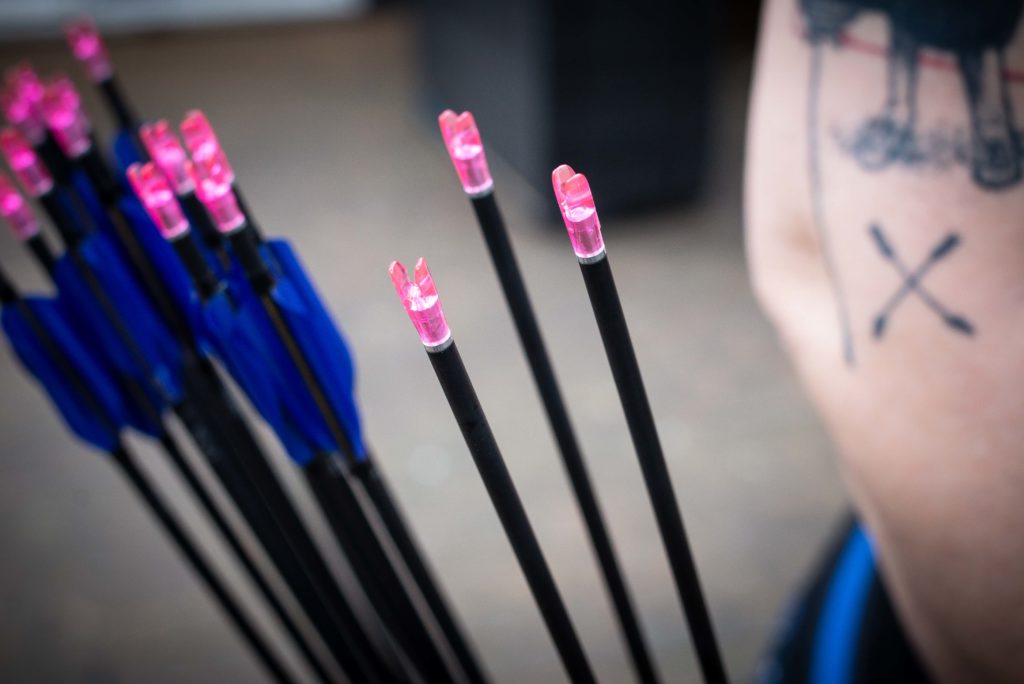Is tiller and bracing height really that important? Andrew Smith investigates.

With a modern three piece recurve bow, we do not hold the bow in the centre. This means that we do not draw the limbs back evenly; if the limb bolts are set equal most target archers shooting with a Mediterranean release will draw the top limb back further than the bottom limb.
The uneven draw creates an imbalance in the bow’s efficiency. In the past bowyers would allow for this by balancing the limbs so that they worked together in beautiful harmony.
This balancing is known as “tillering the bow”. With today’s modern International Limb Fit (ILF) bows, this adjustment is now the responsibility of the archer. Unfortunately the cost benefits of ILF and the mixing and matching of limbs and risers from different manufacturers means that there is no “out of the box” solution.
So here, we will look at what needs to be done to set the tiller. As always if unsure seek help from your trusted archery dealer or coach. Poor tiller settings will ultimately affect the overall performance and accuracy of your bow.
How is it really measured?
The tiller measurement on an ILF bow is the perpendicular distance from the string to the base of the top and bottom limb (where it meets the riser). The tiller reading is the difference between the top limb minus the bottom limb. For most target archers this usually results in a positive figure between 0-6mm.
A positive tiller means that the gap is bigger at the top, neutral tiller is equal, and with negative tiller the gap is bigger at the bottom. A negative tiller is commonly seen on barebows when archers stringwalk, pulling the bottom limb back more than the top for most distances.
What are the effects of tiller?
If the tiller is not set correctly, the limbs will not be working together; this means one will be working harder than the other and storing more energy, which will then be unequally transferred to the arrow.
A less-well-known effect of poor tillering is that at the same time the limb tips will not finish the shot cycle together, making the nocking point unstable, so when the arrow is released from the string it will be deflected.
Bow hand pressure and the position of the fingers on the string are the main two influences on the tiller set up, but different arrows can also require small adjustments to either the tiller or nocking point height – something that is often overlooked when archers switch arrows.
Poor tiller set up will show up most noticeably as a noisy bow, your limb tips will not stop moving after the shot and you may both feel and see vibration in the limbs. All of this results in an inconsistent bow, poor arrow flight and worse sight marks.
The tiller adjustment is in itself very simple, it’s just a case of winding the limb bolts in or out. When making adjustments to these bolts check with the riser manufacturer’s instructions as to whether you can make these adjustments with the bow strung or unstrung.
If unsure, always make the adjustments with the bow unstrung. For safety, make sure that the final adjustments do not wind the limb bolts out further than recommended by the riser manufacturer.
The word consistency is everything when shooting a bow, if you cannot get your hand position in the same place each shot, release cleanly or even set the fingers and pressure on the string the same, it is pointless worrying about fine adjustments to the tiller and nocking point height.
So at this stage it is best just to stick with the basic set up completed in the shop or by your coach, leaving you all the time you need to practice.

The process
When setting up a bow for the first time and allowing for the fact that most risers are fitted with a medium grip a tiller setting of 5mm positive and a nocking point of 4mm above square is a good place to start. For barebow and string walking set the bow to an equal tiller and again a nocking point height of 4mm.
We are not concerned here with what the top archers do as they spend a lot of time making sure their arrow flight is as perfect as possible and they have the shot to shot consistency to make sense of all their testing. The procedures here can be done by everyone and assumes you already have the basic nocking point and tiller settings mentioned above, plus or minus a millimetre or two.
Step 1
Bracing height needs to be within recommended guidelines, for bows that have limbs and a riser from different manufacturers you need to look at the shape of the limbs at BH, neither limb should be flat when the bow is strung, you should be able to see a slight bend. For a quick reference you should be able to see 1cm of top limb string groove not touching the string when the bow is braced.

Step 2
Your limb tips are straight, centreshot and cushion plunger are set to the recommended guidelines; for a RH archer arrow the tip is to the left of string when looking from behind and cushion plunger spring set to medium.
Step 3
Draw up your bow with all the accessories fitted and get a coach (or staff at an archery shop) to watch the bow and how it settles at full draw, if it tips up or down then you will know that the limbs are out of balance. You can make a minor adjustment to the tiller so the draw is level (if the bow is tipping up, increase the tiller and vice versa). Note: if you end up with more than plus 6mm tiller or negative tiller it is more likely a change in the nocking point is required.
Step 4
A “balanced” bareshaft test at 18m for Carbon and A/C arrows. Everything we do when making adjustments is about improving arrow flight. This is the easiest test to do and shows instant results. In fact this is the first tests I do after watching the archer, as it tells me so much about how the bow is set up and the suitability of the arrows.
We want the arrows and bareshaft to land in the same group. Carry out this test and evaluate the relationship between where the fletched arrows and bareshaft land. If the bareshaft is directly above the fletched arrows then the nocking point is too low and vice versa.
Make the necessary adjustments and redo the test, if your arrows are showing up too weak or stiff (for a right hand archer, the bareshaft to the right of the fletched arrow or left respectively) then this needs sorting before you carry on.
It is also important to make sure that your arrows are not making contact with the bow, which will give you false results (look for tell-tale signs marks on the riser or vanes, or carry out a ‘lipstick test’).
Considerations
A) Ability. Don’t expect to match the diagram exactly, be realistic. If at the end of the adjustments your balanced bareshaft lands within your average group size this will be good enough.
As you get better your groups will get smaller and so will your tuning be more accurate. Please note, some will say that 18m is too close, but we have to be realistic; tuning at longer distances such as 30m at this stage could have you chasing your tail unless you are already scoring around 600 on a WA70m round.
B) For most there will be no need to adjust the tiller from the basic settings mentioned in step 2, but if the nocking point is showing too high or low after the bareshaft test then the quick fix is to adjust the nocking point. If after all the testing and adjustments you get some strange results outside of those mentioned here then something is wrong.
When this happens check the bow over for errors in set up (especially checking that the limbs are not upside down), then set the tiller to 0mm and the nocking point at 4mm above square and repeat the bareshaft test and adjust accordingly. Eventually you will likely end up somewhere between 0mm & 6mm for tiller and between 4-6mm nocking point height.
Some manufacturers make the bottom limb a bit stiffer than the top limb so it is important to make sure they are fitted the correct way round, and when adjusting the limb bolts this built in tiller is taken into account otherwise your measurements will be out. However many limbs are matched up equally so it may not make a difference other than the decals being upside down. This is not so important.
Always check your measurements with a T-gauge as shown, don’t rely on just counting the turns of the limb bolts.

Final thoughts
The tiller is important for the balance of the bow, but it cannot be fine-tuned without taking the whole of the bow set up in to consideration and your shooting ability.
The better you shoot the more important it might be, but there are still many top archers that set the tiller to zero and just make adjustments to the nocking point height with a bit of balancing of the stabilisers by adding weight on the ends to stop the bow moving up or down.
For most club archers working on form is more important, so there is no real benefit to stray from basic set up until we are shooting around 550 to 600 points for a WA70 or we need to investigate why the arrow flight is particularly poor. Remember: the bow will always outshoot the archer. Almost always, anyway.


Need thw picture for step no 3 because im little biy confused
Just beginning Olympic style recurve archery at age 70, and trying to build strength. Types of exercise would be helpful. Thanks.
My Arrow saft is in the group at -3 ( negative ) tiller .
Arrow flight is good .
I have just one problem, that my sight going very down and I have proble to aim .
When I shoot arrow i find my long baar in the middle of the my aim.
And my mocking point also on 6.
What should I do ? ,☹️
Im 77 just shoot a lot of arrows at least 200 a day lve been doing it since 1958 nothing else seams to work
I may have missed it but this only applies to shooting with a fixed string position, if you are shooting bare bow and string walking then you actually want the bow to tip downward when you crawl down the string. The limbs being slightly out of synch’ an unfortunate side effect.
The only thing I would add is that just because your limb bolts are wound in/out by the same amount does not mean you will have a neutral tiller, most modern ILF limbs are actually tillered (with the top and bottom limb bolts in the same position you will have a slightly positive tiller). So you MUST measure the tiller.
I’m a 72 year old novice, just bought a blackwolf and I stringwalk . Thanks for the good info.
I think it’s going to make a world of difference.